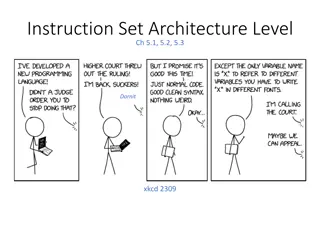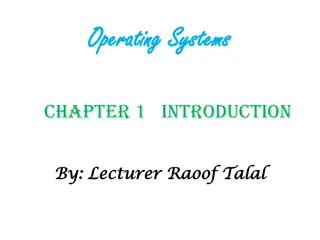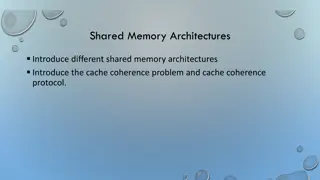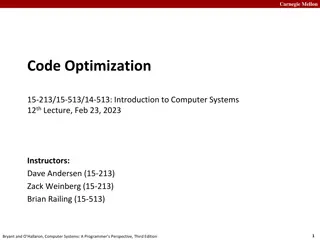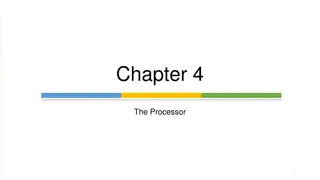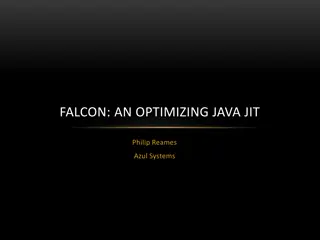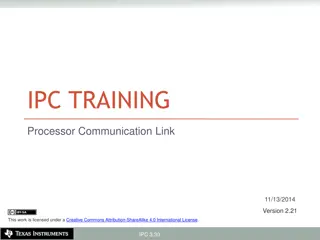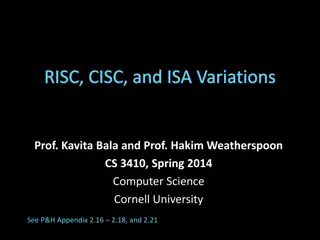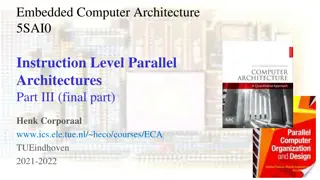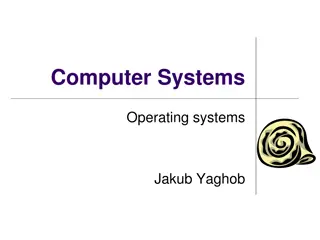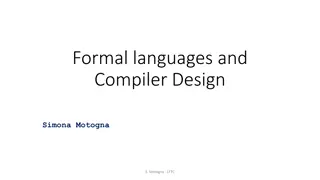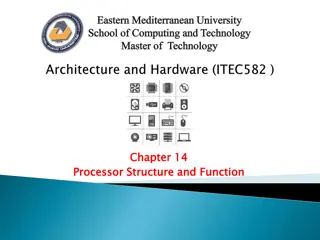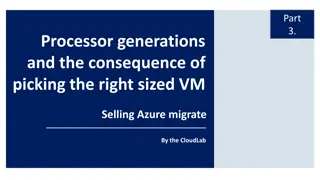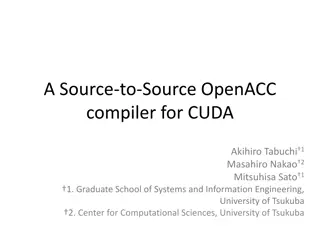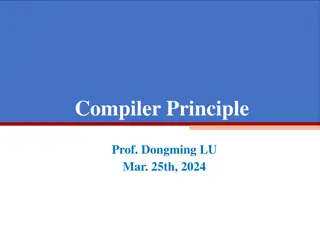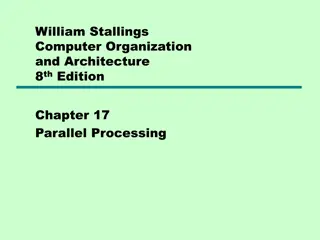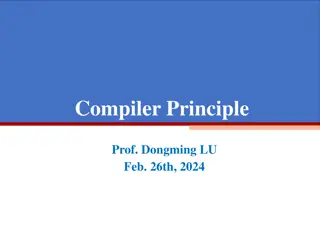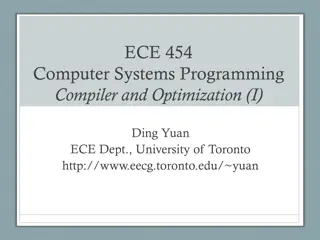Processor Architectures and Compiler Principles
In the realm of processor architectures and compiler principles lies a crucial interplay that influences code generation and optimizations. The architecture of a processor directly impacts the backend operations of a compiler, guiding the generation of intermediate code and instructions. Explore the significance of registers, instruction sets, pipelining, superscalar processing, and out-of-order execution in optimizing performance and efficiency.
Download Presentation

Please find below an Image/Link to download the presentation.
The content on the website is provided AS IS for your information and personal use only. It may not be sold, licensed, or shared on other websites without obtaining consent from the author.If you encounter any issues during the download, it is possible that the publisher has removed the file from their server.
You are allowed to download the files provided on this website for personal or commercial use, subject to the condition that they are used lawfully. All files are the property of their respective owners.
The content on the website is provided AS IS for your information and personal use only. It may not be sold, licensed, or shared on other websites without obtaining consent from the author.
E N D
Presentation Transcript
Compiler principles Processor architectures Jakub Yaghob
Processor architectures Processor architecture is a target language For compilers targeting a processor code It influences the compiler backend, namely code generator It can affect an intermediate code form and instructions, used high-level optimizations
Registers The fastest memory Precious resource x86 has 7 of 32-bits integer registers x86_64 has 15 of 64-bit integer registers IA-64 has 128 of 64-bits integer registers Different register types for different data types Integer, floating point, address, vector Different access modes Direct Stack (x87 FPU)
Instruction set RISC Small number of simple instructions e.g. no division CISC Complex instructions, wide repertoire Load-Execute-Store Register-only operands for arithmetics Orthogonality x86 has non-orthogonal instruction set
Pipelining Next instruction fetch and decode started before the previous instruction was finished Each stage and each instruction has a latency Problem with operand dependency (RAW)
Superscalar processor More equal units capable of parallel instruction execution
Out-of-Order Execution Instruction fetch Instruction dispatch to an instruction queue The instruction waits until its input operands are available The instruction is issued to its execution unit The results are queued When all older instructions written their results to the register file, the instruction writes its result
Out-of-Order Execution ARM Cortex-A72
Branch prediction Deep pipelines have a problem with not taken conditional jumps Dynamic branch prediction BTB CPU uses history (patterns of some length) for branch prediction Static prediction used when no history is available Static branch prediction No hint Forward jump is not taken, backward jump is taken Hint A compiler computes branch probability and generates appropriate branch hint Delay slot
Speculative execution Execution of a code in advance which is not used later Significant disproportion between CPU and memory speed Usually used for read operations in advance CPU postpones write operations Memory barriers Code speculation Check for successful execution Data speculation Moved forward even with possible pointer-aliasing
SIMD instructions Sometimes called multimedia instructions Integer and float data types Expression vectorization already in intermediate code or later in code generation Considerable (constant) execution speedup Sometimes difficult detection of vectorization opportunity
VLIW Instruction encoding Templates in IA-64 ILP (Instruction Level Parallelism) Concurrency encoded directly in instructions Dependencies in concurrency group RAW, WAW disallowed WAR allowed
SoC (System on Chip) + microcontrollers Small memory space Optimization for size of code and data One-bit variables Separated memory spaces Code and several data address spaces Different access Simple pipeline, no superscalarity
Code generation Memory allocation Instruction selection Register allocation Instruction scheduling Output Output file format Objects Code, data, relocations, external and public symbols, debug information
Memory allocation Code Jump resolving Static data Global data Stack Local variables and function parameters Size of data types Memory placement Data alignment Decide, what is in memory and what gets an allocated register
Instruction selection 1:N One intermediate code instruction corresponds with N target instructions Simple, the generated code is considerably suboptimal M:N M intermediate code instructions correspond with N target instructions NP-complete problem of selection Heuristics More possibilities of code generation CISC, SIMD, VLIW Non-orthogonal instruction set problem
Register allocation What is placed to the memory and what is placed into a register of a required register type Non-orthogonal instruction set problem Coloring of a graph of variable liveness The graph is constructed only for a selected variable type (e.g. integer variables) The number of colors is equal to the number of available registers of the selected type When there is no graph coloring, remove less important graph nodes and try again We don t need to find an optimal graph coloring, we are looking for any graph coloring
Instruction scheduling Rearrange instructions keeping semantic and avoiding pipeline stalls RAW, WAW, WAR dependencies Construct graph of data dependency Oriented graph, where an edge represents instruction ordering for data availability Find any topological order Instruction latency, speculations, superscalarity, out-of- order execution Usually performed upon one basic block




